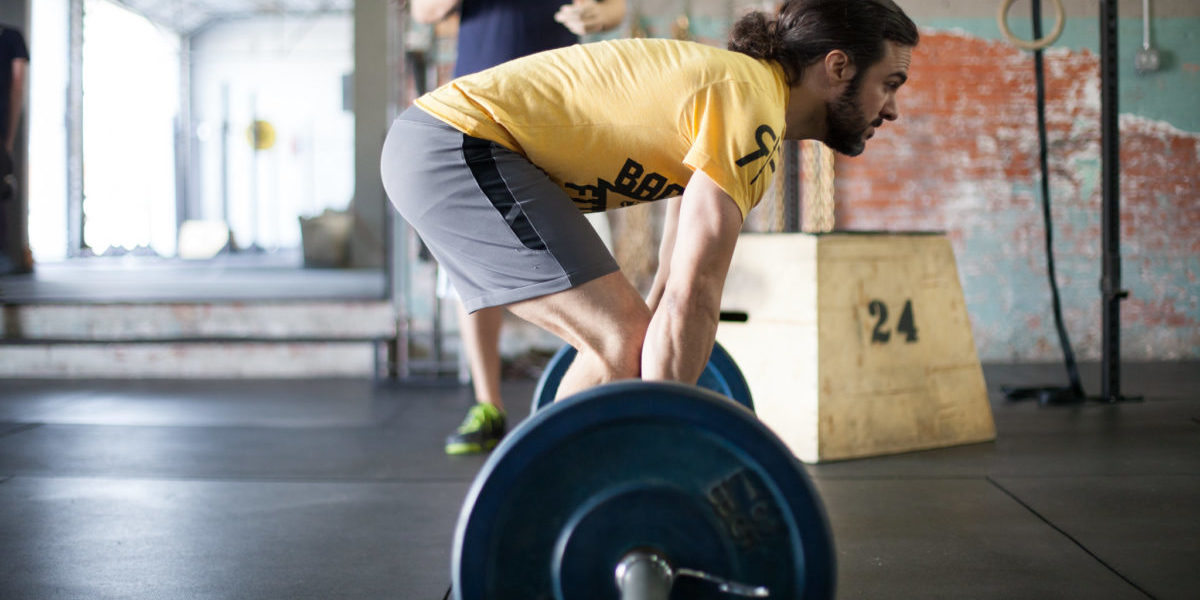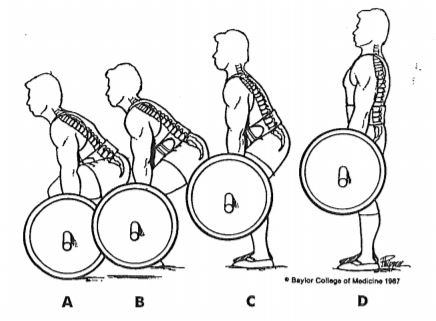So, you’ve started deadlifting, but you’re not sure if you’re just weak, or if you’re going to break your spine, and there are plenty of “gym bros” slamming the weights, grunting, and walking around wearing equipment (wrist straps and back belts) that says “I’m literally too strong for my own body.” So, what do you do? Do you need to buy that stuff too?
This blog post will walk you through a biomechanical analysis of the deadlift while wearing supportive equipment, in the hopes of helping you face this daunting task.
First, let’s look at the proper form and muscles recruited in the Deadlift. As can be seen in the graphic below, the lift begins on the ground in a hinged squat. From A to C, The gluteus maximus (butt), trapezius and lower erector spinae (long muscles that run alongside the spine) are primarily activated, whereas from C to D, the hip extensors and numerous smaller upper back muscles help to “lock out” the form, with the forearms supporting the load throughout.
The science of using wrist straps as discussed here. Your forearms are significantly weaker than your gluteus and back, and as such, they will fail first. A comparison of different kinematic variables as a function of wrist straps and unsupported showed a higher activation in the back when using straps. This means, when using wrist straps, you reduce the load on your forearms, which allows you to go heavier with weight. In essence, it takes grip strength out of the lift.
Improper form, like arching your back, hips rising too early, leaning too far forward, or many other small inefficiencies can lead to concentrated shear stresses between the vertebrate in the back (not good), excessive reliance on small ligaments in lower back (not good), and high stress concentrations at the moment hinge (especially not good considering your lower back is a nerve junction between your sciatic and spinal nerves). So how do you prevent this?
Many people instantly reach out to supportive equipment as their saving grace, but does this really prevent injury or does it just add a false sense of security to allow dangerous form? Studies by Thomas and Kingma both look at the effectiveness of weightlifting belts in protecting your spine in various loading conditions. Although I encourage you to read them and discover their findings for yourself, they both reach generally the same conclusion. Belts might help, by increasing Internal Abdominal Pressure (IAP) says Thomas, and by decreasing spinal load, tested by Kingma, however, any benefit is nominal.
As far as my suggestion goes, you should begin deadlifting at lower weights, without a belt or straps, until you get a feel for the form. This will begin to increase your strength in the smaller muscles and form muscle memory required for heavier lifting. Listen to your body. If a lift went well, and you think you can increase the wight without sacrificing form then go up in weight. Eventually, a weightlifting confidence will step in, and you’ll be able to determine for yourself which strength you want to strive for (grip strength, or bigger deadlift numbers).
If profane language is no issue for you, I STRONGLY encourage watching the YouTube video appended below. Eddie Hall, a now retired professional strongman, owns the record for the ONLY 500 kg Deadlift, and he most certainly knows what he’s talking about.
PS he trains without any supportive equipment, and safe to say he’s lifting heavier than you.
Related Articles
Injury Prevention in Front Vs. Back Squat
Featured image cropped from “deadlift” by adrian valenzuela which is licensed under CC BY 2.0.

